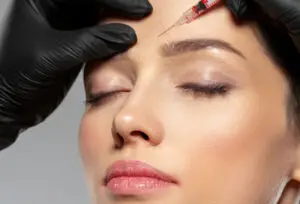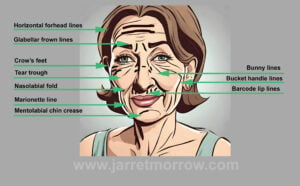One of the most common questions that I am asked when doing consultations for patients with varicose veins is simply, “what causes varicose veins?” For the most part, when people ask me this particular question, I’d imagine that what they are really asking about specifically are what are the risk factors that contribute to developing varicose veins rather than the underlying pathophysiology or mechanism. We’ll take a look at both.
Very close veins? Thinking back to medical school, I remember during one of my courses a discussion on medical transcription errors. It goes without saying that varicose veins have nothing to do with being very close veins.
So what is the mechanism?
Let’s start with the basics. How does blood fight gravity and flow from your feet back up to your heart? This blood flow relies on healthy bicuspid valves in the veins that direct flow in one direction. This blood flow is facilitated by the muscles in the legs that act as pumps when they contract. Blood flows from the veins closer to your skin surface to the deep vein system via perforators then ultimately back up towards your heart. Damage to the valves in these veins leads to reflux of blood from the deep vein system to the superficial veins. This increases pressure in the veins, called venous hypertension, leading to venous disease and varicose, reticular, and spider veins. This can include skin changes and even ulcers.
Risk factors for developing varicose veins aka, so why did this happen to me1-3?
- Advanced age – As we get older, our risk of developing varicose veins, not surprisingly, increases as veins lose elasticity.
- Gender—Women are at a higher risk than men.
- Genetics – If both of your parents have varicose veins, and you’re female, your almost certain to develop varicose veins.
- Obesity – It’s thought that the increased abdominal pressure associated with obesity plays a role.
- Pregnancy – Risk increases further with more pregnancies and live births. During pregnancy, your circulating blood volume increases.
- Occupations that require prolonged standing due to gravity inducing increase pressure and volume of blood on the lower limbs.
- Prior DVT—People who have had prior deep vein thrombosis or blood clots in their legs are at an increased risk of developing varicose veins.
- Controversial factors. Interesting studies haven’t found a robust effect of either oral contraceptives or hormone replacement therapy as risk factors.
- Ligament laxity (flat feet)
- Height – studies suggest an increased risk in tall individuals.
Treatment Options
Conservative measures for varicose veins include elevating your legs to the heart level (or slightly higher) for 30 minutes per day, 3-4 times per day, staying physically active, and wearing medical-grade compression stockings. Click on the following link for information for consultation regarding treatment with sclerotherapy.
References
- Kabnik,L. March 10, 2021. Overview of Lower Extremity Chronic Venous Disease. UptoDate. https://www.uptodate.com/contents/overview-of-lower-extremity-chronic-venous-disease
- Jacobs BN, Andraska EA, Obi AT, Wakefield TW. Pathophysiology of varicose veins. J Vasc Surg Venous Lymphat Disord. 2017 May;5(3):460-467. doi: 10.1016/j.jvsv.2016.12.014. PMID: 28411716.
- Fukaya E, Flores AM, Lindholm D, Gustafsson S,Zanetti D, Ingelsson E, Leeper NJ. Clinical and Genetic Determinants of Varicose Veins. Circulation. 2018 Dec 18;138(25):2869-2880. doi: 10.1161/CIRCULATIONAHA.118.035584. PMID: 30566020; PMCID: PMC6400474






